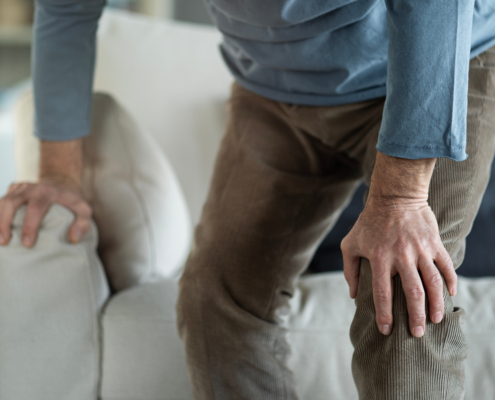
Homöopathie wirkt unter medizinischen Alltagsbedingungen
Beobachtungsstudien zeigen mehrheitlich, dass unter den Bedingungen des medizinischen Alltags die homöopathische Behandlung eine große (statistisch signifikante) Wirksamkeit aufweist.
In einer guten und fairen kontrollierten Studie (RCT) kann das, was gemessen wird, mit einiger Sicherheit korrekt erfasst werden (sog. interne Validität). Die bekannte Kritik: Kontrollierte Studien werden unter besonders ausgewählten Bedingungen an speziellen Zentren von speziellen Ärzten mit speziellen (oft angeworbenen) Patienten durchgeführt. Z.B. bestehen strenge Ein- bzw. Ausschlusskriterien (Alter, sozialer Status, Lebensstil, geographische Besonderheiten, Begleiterkrankungen, Medikamenteneinnahme u.a.). Die Umstände der alltäglichen medizinischen Versorgung stehen nicht im Mittelpunkt, sie werden nicht gut abgebildet. Deswegen können die Behandlungsergebnisse kontrollierter Studien oft nur eingeschränkt auf die Routineversorgung übertragen werden. Ebenso hinterlässt ihre meist kurze Dauer Unsicherheiten hinsichtlich der langfristigen Effekte einer Behandlung.

Alltag in der Sprechstunde
Bei Beobachtungsstudien geht es eher um den Nutzen und die Tauglichkeit einer Behandlung unter Alltagsbedingungen – so, wie medizinische Versorgung in der Realität stattfindet (sog. externe Validität). Sie liefern verlässliche Informationen über die (längerfristige) Veränderung des Gesundheitszustandes unter einer bestimmten Behandlung im Vergleich zu einer anderen Behandlung oder keiner (zusätzlichen) Behandlung. Aus methodischen Gründen können Beobachtungsstudien nichts genaues darüber aussagen, was genau im Rahmen der Studie den positiven Effekt erzielt hat.
Homöopathie –
Wirksamkeit in Beobachtungsstudien
M. Teut von der Hochschulambulanz für Naturheilkunde der Charité- Ambulante Beratung und Therapie in Berlin fasst die Ergebnisse zusammen:
„Die Studien aus der Versorgungsforschung zeigen in der Summe ein relativ einheitliches Bild: Bei Patienten, die sich homöopathisch behandeln lassen, treten im klinischen Alltag relevante Verbesserungen auf, ähnlich stark ausgeprägt wie in der konventionellen Therapie, allerdings mit weniger Nebenwirkungen…“ (Teut 2017).
Beobachtungsstudien können auch darauf abzielen, gesundheitsökonomische Fragen zu beantworten. Die Ergebnisse dieser Studien weisen darauf hin, Homöopathie ist eine kosteneffiziente Behandlung (Studien zur Kosteneffektivität). Insbesondere konnte gezeigt werden, dass im Rahmen der homöopathischen Behandlung weniger Antibiotika eingesetzt werden..
Unsere Quellen
Danno et al: Homeopathic treatment of migraine in children: results of a prospective, multicenter, observational study. J Altern Complement Med. 2013 Feb, 19(2):119-23
Friese et al: The homoeopathic treatment of otitis media in children – comparisons with conventional therapy. Int J Clin Pharmacol Ther. 1997 Jul, 35(7):296-301.
Gründling et al: Real-life effect of classical homeopathy in the treatment of allergies: A multicenter prospective observational study. Wien Klin Wochenschr. 2012 Jan, 124(1-2):11-7.
Haidvogl et al: Homeopathic and conventional treatment for acute respiratory and ear complaints: a comparative study on outcome in the primary care setting. BMC Complement Altern Med. 2007 Mar 2, 7:7.
Homeopathy Research Institute. Beobachtungsstudien. www.hri-research.org/de/informationsquellen/wichtiges-forschungsmaterial/beobachtungsstudien/
Keil et al: Homoeopathic versus conventional treatment of children with eczema: a comparative cohort study. Complement Ther Med. 2008 Feb, 16(1):15-21.
Lüdtke et al: Are the effects of homeopathy attributable to a statistical artefact? A reanalysis of an observational study. Evid Based Complement Alternat Med. 2013, 2013:612890
Nayak et al: Homeopathy in chronic sinusitis: a prospective multi-centric observational study. Homeopathy. 2012 Apr, 101(2):84-91.
Nayak et al: A prospective multi-centric open clinical trial of homeopathy in diabetic distal symmetric polyneuropathy. Homeopathy. 2013 Apr, 102(2):130-8
Pomposelli et al: Observational study of homeopathic and conventional therapies in patients with diabetic polyneuropathy. Homeopathy. 2009 Jan, 98(1):17-25
Riley et al: Homeopathy and conventional medicine: an outcomes study comparing effectiveness in a primary care setting. J Altern Complement Med. 2001 Apr, 7(2):149-59.
Roll et al: Comparative effectiveness of homoeopathic vs. conventional therapy in usual care of atopic eczema in children: long-term medical and economic outcomes. PLoS One. 2013, 8
Rossi et al: Homeopathic therapy in pediatric atopic diseases: short- and long-term results. Homeopathy 2016 Aug;105(3):217-224.
Rossi et al: Homeopathy in the public health system: a seven-year observational study at Lucca Hospital (Italy). Homeopathy. 2009 Jul, 98(3):142-8
Rossignol et al: EPI3-LA-SER group. Impact of physician preferences for homeopathic or conventional medicines on patients with musculoskeletal disorders: results from the EPI3-MSD cohort. Pharmacoepidemiol Drug Saf. 2012 Oct, 21(10):1093-101
Rostock et al: Classical homeopathy in the treatment of cancer patients – a prospective observational study of two independent cohorts. BMC Cancer. 2011 Jan 17, 11:19
Spence et al: Homeopathic treatment for chronic disease: a 6-year, university-hospital outpatient observational study. J Altern Complement Med. 2005 Oct, 11(5):793-8
Steinsbekk et al: Patients‘ assessments of the effectiveness of homeopathic care in Norway: a prospective observational multicentre outcome study. Homeopathy. 2005 Jan, 94(1):10-6.
Teut et al: Homeopathic treatment of elderly patients – a prospective observational study with follow-up over a two year period. BMC Geriatrics 2010; 10:10
Teut, M. 2017. Versorgungsforschung zur Homöopathie. www.homoeopathie-online.info/versorgungsforschung-zur-homoeopathie/
Thompson et al: The homeopathic approach to symptom control in the cancer patient: a prospective observational study. Palliat Med. 2002 May, 16(3):227-33
Thompson et al: A patient reported outcome measure in homeopathic clinical practice for long-term conditions.
www.pubmed.ncbi.nlm.nih.gov/27914570/
Thompson et al: The homeopathic approach to the treatment of symptoms of oestrogen withdrawal in breast cancer patients. A prospective observational study. Homeopathy. 2003 Jul, 92(3):131-4.
Thomson et al: Towards standard setting for patient-reported outcomes in the NHS homeopathic hospitals. Homeopathy. 2008 Jul;97(3):114-21.
Van Wassenhoven et al: M. Pediatric homeopathy: a prospective observational survey based on parent proxy-reports of their children’s health-related Quality of Life in six European countries and Brazil. Homeopathy. 2014 Oct, 103(4):257-63.
Walach et al: The long-term effects of homeopathic treatment of chronic headaches: one year follow-up and single case time series analysis. Br Homeopath J. 2001Apr, 90(2):63-72
Wissenschaftliche Gesellschaft für Homöopathie (Hrsg.): Der aktuelle Stand der Forschung zur Homöopathie. Mai 2016. www.homoeopathie-online.info/wp-content/uploads/Der-aktuelle-Stand-der- Forschung-zur-Homöopathie-2016-WissHom.pdf
Witt et al: Outcome and costs of homoeopathic and conventional treatment strategies: a comparative cohort study in patients with chronic disorders. Complement Ther Med. 2005 Jun, 13(2):79-86
Witt et al: Homeopathic medical practice: Long-Term Results of a cohort study with 3981 patients. BMC Public Health 2005, 5:115
Witt et al: How healthy are chronically ill patients after eight years of homeopathic treatment? – Results from a long term observational study. BMC Public Health 2008, 8:413
Witt et al: Homeopathic treatment of patients with chronic headache – a prospective observational study with a follow-up over two years. Forsch Komplementmed 2009, 16:227-235
Witt et al: Homeopathic treatment of patients with chronic sinusitis: a prospective observational study with 8 years follow-up. BMC Ear Nose Throat Disord 2009, 9:7
Witt et al: Homeopathic treatment of patients with chronic low back pain – a prospective observational study with 2 years follow-up. Clin J Pain 2009;25:334-339
Witt et al: Homeopathic treatment of patients with dysmenorrhea – a prospective observational study with 2 years follow-up. Arch Gynecol Obstet 2009;280:603-611
Witt et al: Homeopathic treatment of patients with psoriasis – a prospective observational study with 2 years follow-up. J Eur Acad Dermatol Venereol 2009;23:538-543
Witt et al: Homoeopathic versus conventional therapy for atopic eczema in children: medical and economic results. Dermatology. 2009, 219(4):329-40
Witt et al: Homeopathic treatment of patients with migraine – a prospective observational study with a two years follow-up. J Alt Complement Med 2010, 16(4):347-355
Beobachtungsstudien: Ergebnisse, Zusammenfassungen und Beispiele







